Today we are reviewing something different for GND-Tech. We are no stranger to the audio world however, as shown here and here. The Chord Hugo 2 is a popular high end audio product, more specifically a digital to analog converter (DAC) and headphone amplifier, and a portable one at that. Featuring a 7 hour battery life and a micro USB charging port, as well as a remote control, the Chord Hugo 2 is certainly a convenient device.
For those who don’t know, a DAC is something present on all motherboards and sound cards, smartphones and the like. It is how we get sound from a computer device essentially, converting a binary digital data stream into an analog signal that is then fed into speakers or headphones (and in a higher quality audio setup, it is amplified before reaching passive speakers and headphones).
But there are of course different levels to DAC quality. External DACs range from around $20 to over $100,000. The point of diminishing returns really depends on the quality of your speakers/headphones, amplification, and hearing ability. The Hugo 2 is on the expensive side at $2,695.
It is not just any DAC though. It uses a proprietary FPGA-based design, partially explained here:
Honestly, nobody outside of Chord Electronics knows entirely how they work. Rob Watts, the lead engineer of Chord Electronics, is extremely responsive to questions, and is actually honest and genuine in his responses. He is a man who truly believes in what he does, and he believes he has found the best method for designing DACs. Other common DAC technologies include Delta Sigma, which many people assume Chord DACs are based on (but Chord Electronics does not use off the shelf DAC chips), and Resistor Ladder (R2R). Delta Sigma is most common, what our sound cards and motherboards use. It is chip based, and oversamples the data to increase the resolution, which is necessary to get good sound out of a Delta Sigma DAC and quality oversampling increases the cost. Chord has the best oversampling in the business; not in the Hugo 2 but the Hugo 2 uses trickle down technology from their even higher end offerings (there are two DACs positioned above this model, the Hugo TT 2 and DAVE, and I will also review the former at a later date).
Here is an article on the subject, from a manufacturer explaining why they prefer R2R design. On paper, R2R seemed better to me initially, but the catch is that we need such precisely matched resistors that the cost for doing such is outrageous at best – this is assuming such precision is even possible. And there are different kinds of R2R DACs, e.g. ones that oversample like Delta Sigma DACs do, and those that don’t oversample at all, and then those that not only don’t oversample but also include zero digital filtering which means no noise shaping and just not altering the signal at all. An interesting concept, but to me it just results in highly inferior sound, and advanced digital filtering is strongly needed, and this is where Chord Electronics is unrivaled.
I have used a DAC that contained four resistor ladders per channel, so eight total, and each supposedly contained 0.005% matched resistors. This was the Denafrips Venus which I will reference for comparison’s sake throughout this review, but I’ll just come out and say that I was not impressed, and I am not sold on R2R DAC. No, I’ve never heard the the $85,000+ (well over $100k fully upgraded) MSB Technology Select DAC nor the $34,500+ TotalDAC d1-twelve(mk2) which are the two best R2R DACs in the world, but I’m just not convinced on the technology based on how well the Hugo 2 compared to the Venus.
But the Hugo 2 is also a headphone amplifier, and has two headphone jacks (1/4″ and 1/8″) even allowing for simultaneous listening. The headphone amp stage is pure class A, which means the transistors are always biased “on” meaning it runs hotter but the signal is less distorted, therefore it is ideal. For fundamental information on the subject, read here.
Reviewing a DAC might seem tricky at first, but I don’t believe it will be for the Hugo 2. The improvements it adds to most systems I’ve used is night and day. I will write about the Hugo 2’s sound in the following systems:
- Standalone portable DAC/amp powering the ZMF Ori and Blackwood headphones.
- DAC for the following headphone system: Mjolnir Audio Pure BiPolar amp, Audeze LCD-4 headphones (200 ohms version), Kimber Kable Hero interconnects
- DAC for the following headphone system: Mjolnir Audio KGSSHV Carbon amp, Stax SR-009 headphones, Kimber Kable Hero interconnects
Other DACs of note I have owned are the Bel Canto DAC 3 (used only in balanced mode), Chord Mojo, and Denafrips Venus (used only in balanced mode). An interesting sample set as the Bel Canto DAC 3 represents a high end, more traditional Delta Sigma DAC, and the Denafrips Venus represents one of the better R2R DACs one can buy and offers both Non-Oversampling and Oversampling modes.

I will not delve too much into how to use the device; it is button controlled but also has a remote control that I have never used. It has a 3.5mm coaxial input (44.1kHz – 384kHz – 16bit – 32bit), micro USB input (44.1kHz – 768kHz – 16bit – 32bit), optical TOSLINK input (44.1kHz – 192kHz – 16bit – 24bit), and bluetooth (44.1kHz – 48kHz – 16bit). It also supports dual BNC input via adapters using its 3.5mm coaxial input (44.1kHz – 768kHz – 16bit – 32bit). It also supports DSD64 (Single) to DSD512 (Octa-DSD). I have tested only optical TOSLINK (fed by a Breeze DU-U8 level 3) and USB directly from a Samsung Galaxy S9+, and I hear no difference.
The Chord Hugo 2 is battery powered (2x Rechargeable custom Enix Energies 3.7v 9.6Wh Li-ion (lithium-ion (2600mAh) batteries) which is charged using its other micro USB input. You can keep it plugged in without worry of overcharging, the Hugo 2 is a very intelligent device. It will even automatically set itself into a desktop mode if left plugged in for 24 hours, during which the battery neither charges nor discharges and auto shutoff is disabled.
It can be set to line level output which is fixed at 3v RMS, which is ideal if using it only as a DAC. The Hugo 2 features two headphone jacks (1/4″ and 1/8″) and dual RCA outputs, and the output stage is pure class A.
What About Power Output?
I understand that some may be concerned about this; the Hugo 2 is battery powered, so how can it be competitive with a full sized DAC? The answer to this question is: easily. It easily compares. First of all, I want to talk about the battery. It’s a cleaner power source than any switching power supply, but noisier than a good linear power supply. And yes, less powerful than both of those potentially. It is only rated for 740mW RMS into 32 ohms. That’s plenty for 95% of headphones; for example, this outperformed a Schiit Lyr 3 (6W RMS into 32 ohms) with ZMF Ori and ZMF Blackwood headphones, which are only rated for at most 92 dB/mW (so that’s rather low on the sensitivity scale).
People overestimate power requirements, just like with PCs! You’re hardly ever going to be pumping more than 1W consistently into a headphone since that’ll deafen you. Even 1W is a LOT. For reference, the Hugo 2 will output even less than 740mW into 50 ohms, which the ZMF Ori and Blackwood are rated for, and that’s at maxed out volume. Yet maxing out the volume lead to ear damaging values, so I would not even pump 740mW into them.
It’s the first watt that matters, as Nelson Pass put it (hence why his earlier amps were called the First Watt series, and he designs the best solid state power amps of all time). Quality over quantity. And the Hugo 2 has the quality as I will discuss below, no clipping and minimal distortion. But indeed, it does not have enough power 83 dB/mW HiFiMan HE-6 or SUSVARA headphones.
As for the battery and its noise relative to linear power supplies, I cannot provide measurements unfortunately. I can safely say there is zero noise floor on any Chord DACs (they do not have measurable noise floor modulation), and as you’ll see throughout the review, the Hugo 2 easily outperforms all DACs I’ve owned. Including one with a linear power supply that is nearly the same as this one…
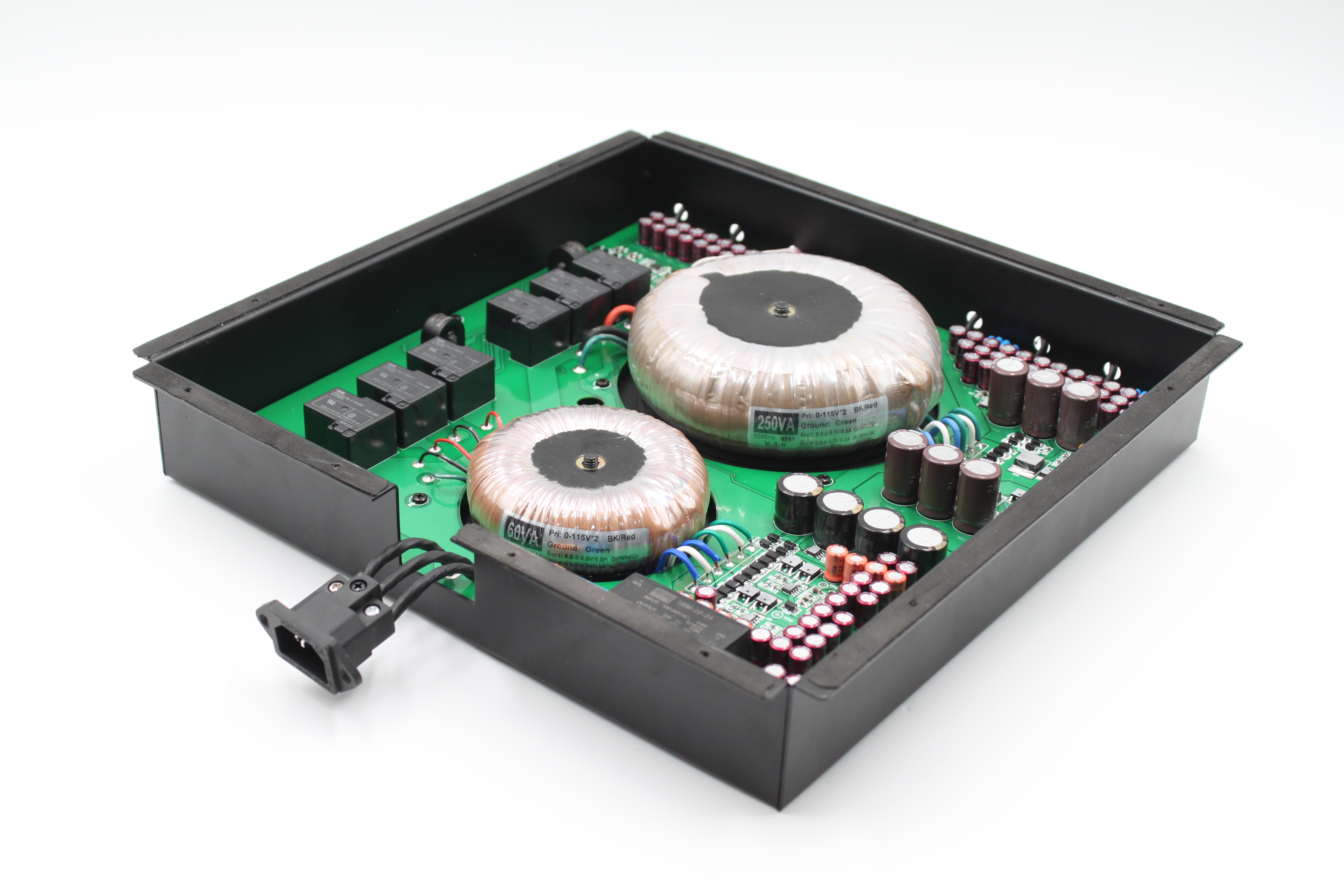
Photo courtesy of Denafrips. This is their Terminator DAC. I’ve owned their Venus DAC which is extremely similar to the Terminator. In comparison, the Venus just has less capacitance and I believe that biggest transformer is smaller in the Venus. Either way, they both have monstrous linear PSUs, completely isolated from the DAC.
And the size of the Hugo 2? It measures at 130mm (L) x 100mm (W) x 21mm (H). While the Denafrips Venus is 320mm x 330mm x 80mm and a whopping 8.5 kg, even more than the Bel Canto DAC 3 which is 216 mm x 318 mm x 75 mm and 6.5 kg. The Hugo 2 is certainly a giant slayer.
General Tonality
The Hugo 2 is a neutral sounding device that is extremely transparent and resolving. Not laid back at all like R2R DACs or the Chord Mojo, it does not refrain from making all details extremely obvious. And it is a bass monster; if you are upgrading to the Hugo 2, expect a new body of bass dimension and much more bass slam to be added.
Of all the DACs I have owned (refer to the significant ones listed above), the Hugo 2 is the bassiest of them all, and it is not artificial bass boost, it is simply not recessing these frequencies. It sounds closest in tonality to the Bel Canto DAC 3, while the Chord Mojo and Denafrips Venus are both notably laid back with 1-2 KHz less treble extension (the DAC 3 also has 1-2 KHz less treble extension but isn’t laid back sounding).
Those trying to create a laid back sound system (which is very common among high end audio enthusiasts) will have to plan around the Hugo 2 not being laid back whatsoever. I don’t call it bright, it’s just not laid back.
So it is neutral, extremely transparent and resolving, and has awesome bass. What else? It also has zero noise floor, breathtakingly clean treble performance when the rest of the system can keep up (this is very important), and incredibly full bodied, weighty, impactful sound for all instruments unlike every other DAC I have owned. Strings, piano, wind instruments, horns, everything sounds and feels as if there is no barrier between me and them, as if they are right there in front of me and I can reach out and touch them – this is of course with the Stax SR-009, KGSSHV Carbon, and Kimber Kable Hero interconnects. The attack is so quick and crisp and clean, the decay is much faster, adding to the transparency, snappiness, speed, and PRaT. Other DACs sound sluggish and blurred in comparison.
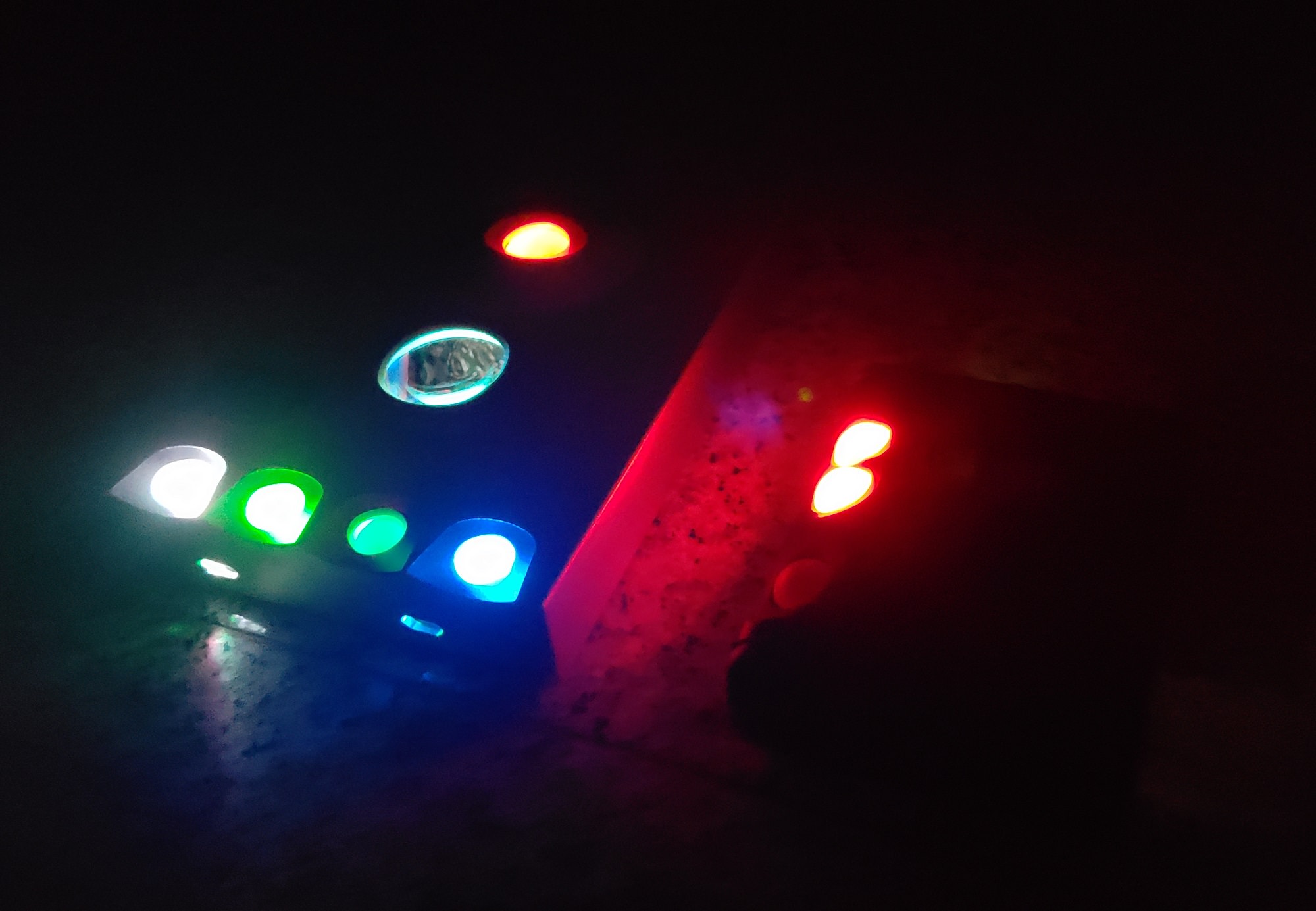
Other noteworthy attributes of the Hugo 2’s sound are incredible 3D sound stage and imaging, far outdoing every other DAC I’ve owned here too. This may all sound like exaggeration, that a DAC can make such huge differences, but I will clarify: the differences are much less pronounced on non-electrostatic headphone systems. But when used with my Stax SR-009 + KGSSHV Carbon system with quality analog interconnects, every aspect of the sound is infinitely better than any other DAC I have owned!
But notice my emphasis on the rest of the system being up to par. If using generic interconnects or Audioquest Evergreen interconnects in the Stax SR-009 + KGSSHV Carbon system, there is notable treble harshness and sibilance. The same would occur if I had a much lower end amplifier I assume. But, insert the Kimber Kable Hero interconnects, and the difference is night and day, pure magic. No more harshness, no more sibilance, so much more airiness and so much better bass slam and body, instrumental impact and weight, sound stage and imaging, attack, decay, transparency, treble extension.
So if you’re hearing rough treble, it’s not the Hugo 2’s fault, it is something else in your system.
The filters do make obvious changes to the sound, sacrificing treble for all the people overly sensitive to it. Crossfeed presents an interesting sound stage that is more centered and in front of you, but with any of these filters I hear some degradation in transparency and refinement, so I use none.
As a Standalone Portable Device
When using the Hugo 2 as a standalone device, it is supremely impressive. Of the three test systems listed above, this is the 2nd most impressive (and I expected it to be most impressive here, but I was wrong). True Hi-Fi sound in your pocket, or bag more realistically. Only in the modern era do we get to carry around a top notch DAC and high end single ended class A headphone amp bundled in one device. For this reason, I have referred to the Hugo 2 as a necessity for any traveling music lover.
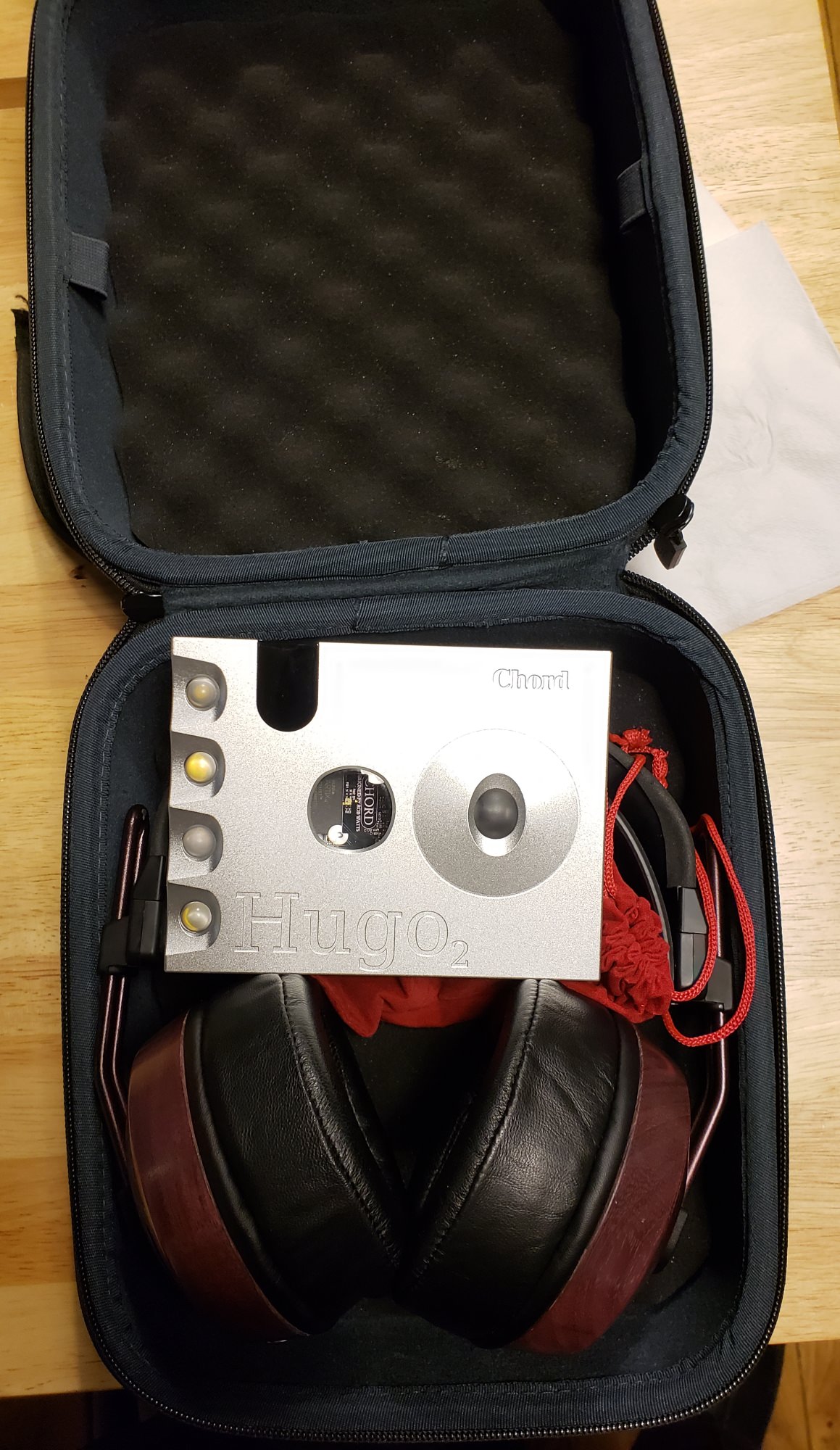
The Chord Hugo 2 alone allows the ZMF Ori and ZMF Blackwood, which are inefficient planar magnetic headphones, to truly shine. Compared to the Chord Mojo as a standalone device, I hear the following differences:
- Less laid back sound signature, upper mids to treble transition is more forward.
- Significantly cleaner upper mids to treble transition and treble response, better treble extension and a bit more “air”.
- Greatly increased bass slam, bass is now much more full bodied and less recessed (biggest difference to me).
- Improved transparency.
- Slightly improved sound stage and imaging but nothing significant here to my ears with this system.
I felt the Hugo 2 was definitely worth the price difference vs the Mojo. Truly high end sound on the go, it’s still hard to believe today how good portable sound can be nowadays.
The Hugo 2 also made my Schiit Lyr 3 at the time redundant, so I sold it. Adding the Lyr 3 to the chain with these headphones just slightly worsened the transparency of the upper frequencies if anything, not a big difference though.
But adding a good enough amp will of course come in handy. The Mjolnir Audio Pure BiPolar brought the ZMF Ori and Blackwood to a different level, as my review of those headphones describes.
As a Standalone Desktop DAC
This is the only way I use the Hugo 2 now. I don’t even listen to music on the go anymore, because I’ve been so spoiled by the Chord Hugo 2 + Mjolnir Audio KGSSHV Carbon + Stax SR-009 + good interconnects that I no longer want to listen to anything below this.
But first, let me share my experience using the Hugo 2 with a high end non-electrostatic system, the Mjolnir Audio Pure BiPolar + Audeze LCD-4 using Kimber Kable Hero RCA interconnects with Neutrik RCA to XLR adapters. With this system, I compared it again to the Chord Mojo, and my impressions were… exactly the same as my impressions in the previous section, only less pronounced.
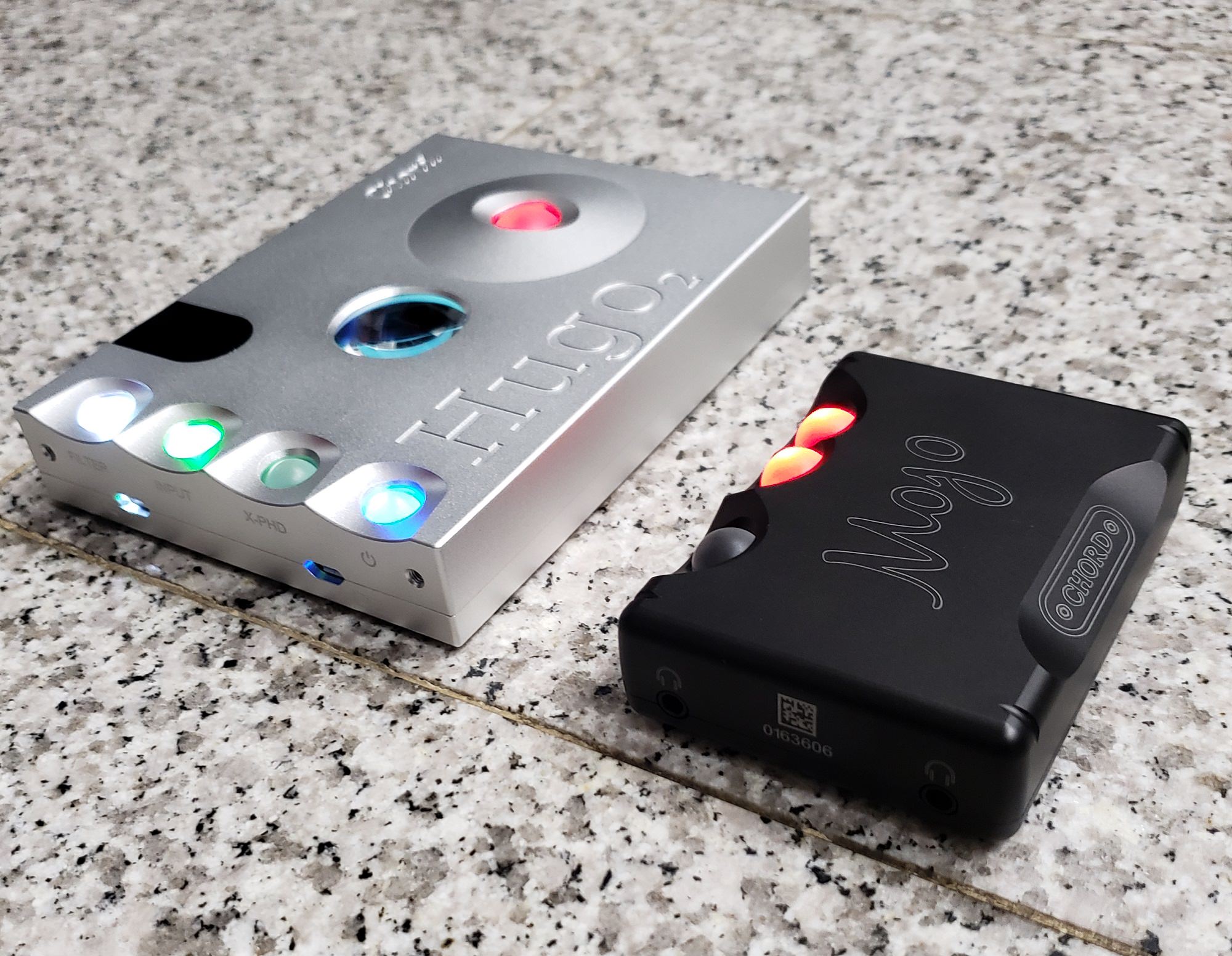
The sound was slightly less laid back again, with improved and more forward upper mids to treble, with more “airy” sound. The bass improvements were still there, but less pronounced – it was a night and day difference before, but now not quite that. The difference in transparency was there but not as huge, sound stage and imaging improvements seemed about the same though.
I don’t think the Hugo 2 is worth the price difference when using something akin to the Mjolnir Audio Pure BiPolar amp and Audeze LCD-4 or ZMF Ori/Blackwood headphones, but keep in mind these headphones are deliberately designed to not be the most revealing sound. A Focal Utopia with this same amp would certainly benefit more from the Hugo 2.
With an Extremely Revealing System
Enter the Stax SR-009, Mjolnir Audio KGSSHV Carbon, and Kimber Kable Hero interconnects (same as above). I cannot shut up about how this system sounds. There’s a reason for that; never before have I been blown away by an audio system or any audio upgrade that much. Not even when going from a Cooler Master “5.1” gaming headset to the AKG K7xx / Beyerdynamic DT 880, not even when comparing a Sennheiser HD 598 Cs to a Sennheiser HD 800/HD 800 S.
This Stax system is what made me really want to write this review. It makes the difference in analog interconnects and especially DACs infinitely more obvious than any non-electrostatic system. This system is why the only DACs I will ever use have to be from Chord Electronics. I will only use the Hugo 2, Hugo TT 2, DAVE, and any successors from now on, and never will I use interconnects below Kimber Kable Hero (in fact I will start exploring top tier interconnects soon).
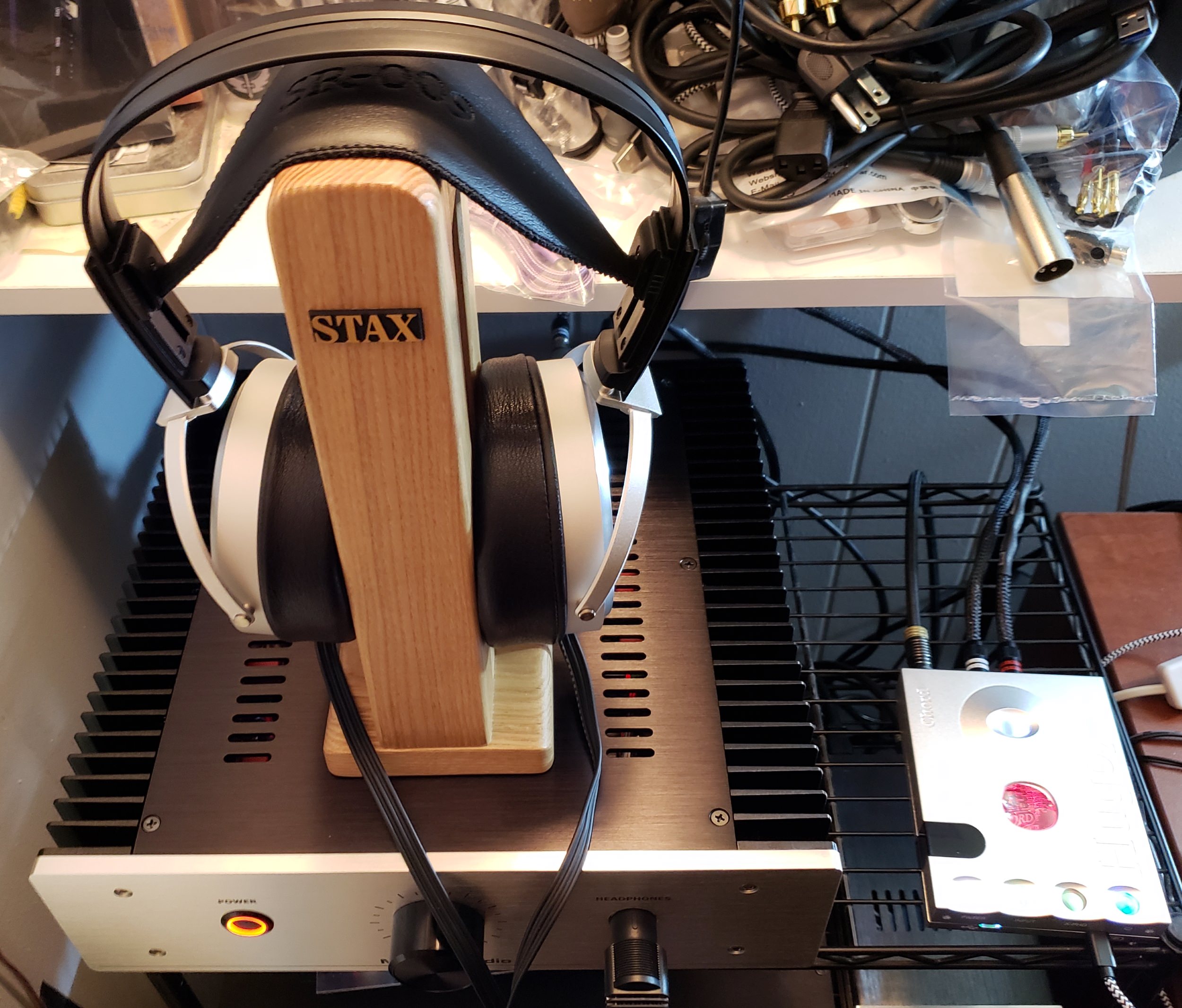
The Chord Mojo is great for the price, but absolutely ruins this system. Honestly, anything other than the Hugo 2, presumably Hugo TT 2 and DAVE, and maybe Qutest will ruin this system to my ears. With the Mojo, the treble sounds like it’s locked away in a cardboard box, all that air up top is trapped. Transparency is way down, many details are far less obvious, bass is gone, sound stage is now flat and two dimensional and seems to extend nowhere. Imaging is blurred and generic, the opposite of precise. And the Mojo is probably the best brand new DAC below $1,000.
In this system, the Denafrips Venus sounds like a much better, cleaner version of the Chord Mojo. The Venus is in the same price range as the Hugo 2 and is a beast of engineering: isolated dual mono PSU with two huge power transformers, four 0.005% precision matched resistor ladders per channel allowing for 26-bit PCM and fully balanced 4.4v RMS output, excellent digital processing. Impressive engineering for the price.
But compared to the Hugo 2, it is too laid back, and I believe this speaks for most R2R DACs, since it is not deliberately designed to sound this way, and it reminds me of how the Holo Audio Spring DAC level 3 sounds. A lot of people will like this about it, laid back “slow” sound is really popular these days, but I prefer what sounds more realistic to me.
This laid back sound from the Venus not only really lowers treble response (but without ruining it like admittedly even the Mojo does, since this is comparing a $500 DAC to DACs valued at over 5x after all) and extension by 1-2 KHz, it really blurs/soften the attack, slows decay, and oddly/unfortunately lowers bass presence and impact, creating a slower softer sound with less PRaT. Plenty of people like this (see all the HE1000 fans), but this reduces transparency. The SR-009 stands out for its speed, attack, crispness and clarity, and is a bass monster with the Hugo 2 and good interconnects.
Ultimately this system allows the Chord Hugo 2 to shine, demonstrating that it is incredibly transparent with superior treble extension and quality, and compared to every other DAC I’ve owned, is so significantly superior in bass slam and body, sound stage, imaging, bringing out detail.
On a no-compromise system, the Hugo 2 injects layers of transparency into the entire frequency range like nothing I have ever heard before. The way it is able to not only clean up any treble harshness, make the attack much crisper and cleaner, and speed up and improve decay, but it is truly extraordinary how much cleaner and more transparent bass, mids, and treble all become. It opens up a window into the music that was previously sealed shut. Its improvements are hugely evident in all genres, and probably the most impressive to me in metal. Without the Hugo 2, instruments sound so much smaller and softer and less clear.
It sounds to me like Chord DACs (Hugo 2 and above) are the only ones that sound “right,” it seems as if Chord not only has the best formula for DACs, but it’s a formula that allows for such quality to be made in a portable form factor. Seems too good to be true, so I am very thankful for these products. And it’s a real genius move on their end; lower production costs for Chord since far less hardware (all Chord DACs are single ended by design, not fully balanced and differential) yet unmatched sonic performance.
Now for the scoring breakdown.
- Functionality: 19/20 – The Hugo 2 is a portable DAC and class A headphone amp with 7 hour battery life, micro USB charge port, it automatically stops charging and will automatically enter a “desktop mode” if left plugged in for 24 hours, has a remote control, features USB input/optical TOSLINK input/coaxial S/PDIF input including dual data mode (e.g. using dual BNC cables from a Chord Hugo M Scaler or Blu Mk2 and adapters), features RCA outputs and two headphone jack outputs (1/4″ and 1/8″) that are all identical to each other from a signal perspective, features a fixed line out mode (3v RMS), supports all relevant PCM sampling modes plus DSD, this little thing just about does it all. It is a highly intelligent device. The only thing I will complain about here is that the RCA connectors are board mounted and recessed within the chassis, rather than being mounted to the chassis externally. This was done to minimize dimensions of the Hugo 2 so it’s understandable, but it greatly limits what RCA connectors it is compatible with. You won’t be using any high end Cardas interconnects here for example.
- Transparency, Detail Retrieval: 20/20 – While I am sure there’s room for even more here (Chord Hugo TT 2 and Chord DAVE only), I have not yet used those. The Hugo 2 is the best I’ve used and unlike the previous best DAC I’ve used, I cannot actively imagine realistically improved transparency or detail retrieval from the DAC. I know the Hugo TT 2 and DAVE will bring it, but I can’t imagine it yet, and it’s hard to ask for more than what the Hugo 2 offers here. I will have to adjust these scores after I get the Hugo TT 2 perhaps, but right now and especially for the price, I cannot dock any points for the Hugo 2’s sound quality.
- Bass, Mids, Treble Performance: 20/20 – Same as above. The Hugo 2 so clearly outclasses every DAC I’ve owned in all of these areas to the point where I can’t ask for more or actively imagine more.
- Sound Stage & Imaging: 20/20 – Ditto. All across the board domination for the Hugo 2.
- Value: 16/20 – $200 higher than the original Hugo at $2,695, and just a high price relative to the hardware inside. But hey, despite it being much less costly to manufacture from a hardware perspective than similarly priced DACs, it outclasses them all I think. And I would expect it to outclass anything from MSB Technology (including a > $100,000 fully upgraded Select DAC) and TotalDAC (including the > $34,500 d1-TwelveMk2) because R2R DACs just seem to sound too soft, blurred, and laid back. It outclassed the similarly priced, monstrous Denafrips Venus which is one of the better R2R DACs you can get, outclassed the respectable Delta Sigma Bel Canto DAC 3, I believe it’ll far surpass any DAC not made by Chord Electronics, but this is also dependent on personal preference (though I’d also expect Chord DACs to top most if not all in measurements). So I can’t be too hard on it here.

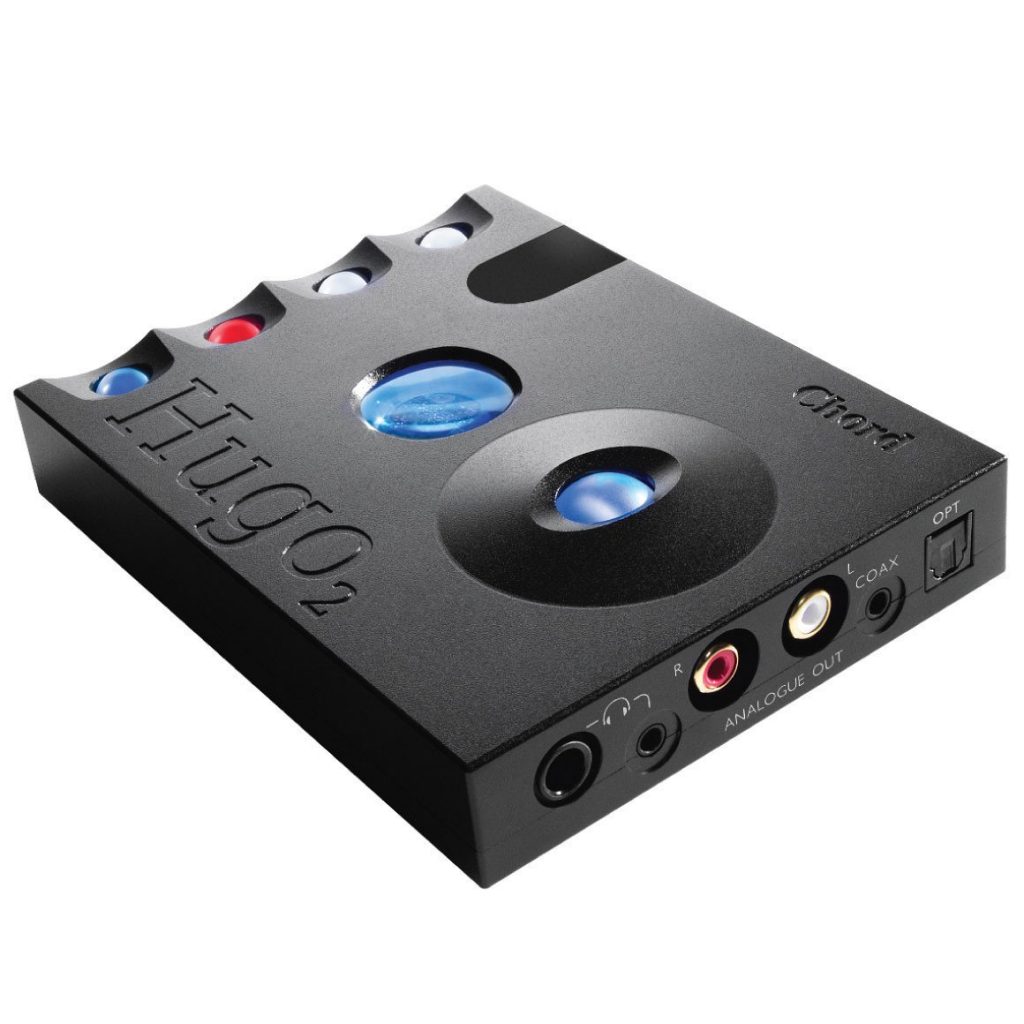



 (5 votes, average: 3.40 out of 5)
(5 votes, average: 3.40 out of 5)
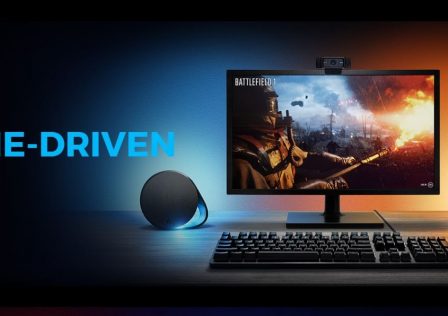
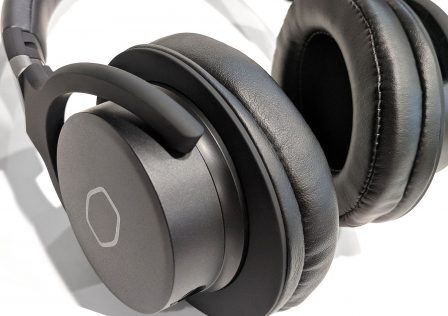
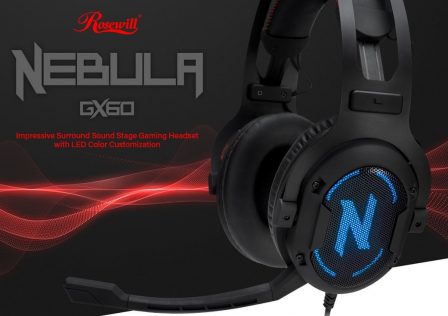

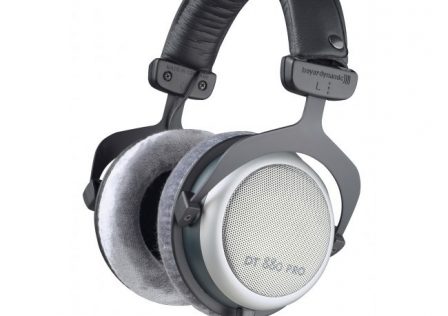

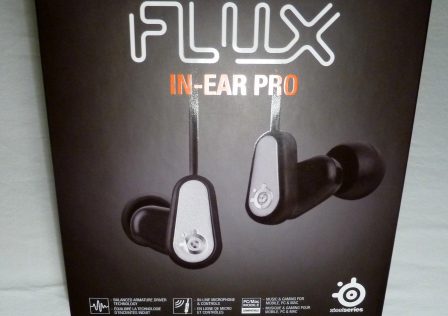

“And I would expect it to outclass anything from MSB Technology (including a > $100,000 fully upgraded Select DAC) and TotalDAC (including the > $34,500 d1-TwelveMk2) “
The worst journalism ever… You even admit in your review that you never listened to those products and all you have for comparison is a cheap taiwanese knockoff “r2r” DAC? Get all the information before making inane proclamations in a review.
I had similar impressions with the Holo Audio Spring DAC Level 3, never had one in my home though. They’re not “knockoffs” of anything (and it’s not Taiwanese), don’t be disingenuous. Since I’m clear that it’s just a prediction, not a proclamation, it’s a harmless statement. I admit I didn’t listened to them because I try NOT to be disingenuous, I also mention how many prefer R2R sound and those are the best you can get with R2R right now. So I clearly frame that it’s just a prediction based on my own listening preferences, again no harm done. R2R… Read more »
If you have never listened to a TotalDAC or MSB Select DAC then you are misleading your readers… sounds like you have an agenda. Did Chord bribe you?
Again, it’s not misleading to state an opinion/prediction like that. One based on being disappointed by two highly sought after and promising R2R DACs. To me, it doesn’t seem like R2R is the way to go. The only real asterisks here are that I’m pretty sure both of those R2R DACs I mentioned use only opamps for I/V conversion, rather than a nice transformer which should make a big difference in some way. I doubt MSB and TotalDACs use opamps for this. Still, that’s not going to change everything. The other asterisk is the Select DAC and d1-twelve not having… Read more »
The fact remains you have a strong opinion about products you have never heard. You are pushing fiction as fact. This puts you in in unenviable position of destroying your own reputation. Denafrips -> Venus -> $2800 -> mainland China Holo Audio -> Spring -> $1600 -> mainland China Chord -> Hugo 2 -> $2700 -> UK TotalDAC -> D1 Direct -> $20400 -> France MSB Technology -> Select DAC -> $84500 -> USA You never auditioned the last two but you have a strong negative opinion of them anyway. WTF! Its your funeral and your just digging your own… Read more »
Pushing it as fact when I clearly label it as an opinion. There’s no learning for you apparently. Nothing disingenuous about clearly mentioning an opinion, only your posts are disingenuous, but anyone can read for themselves.
And the subject was as researched as can be beforehand, which is made evident in my last comment.